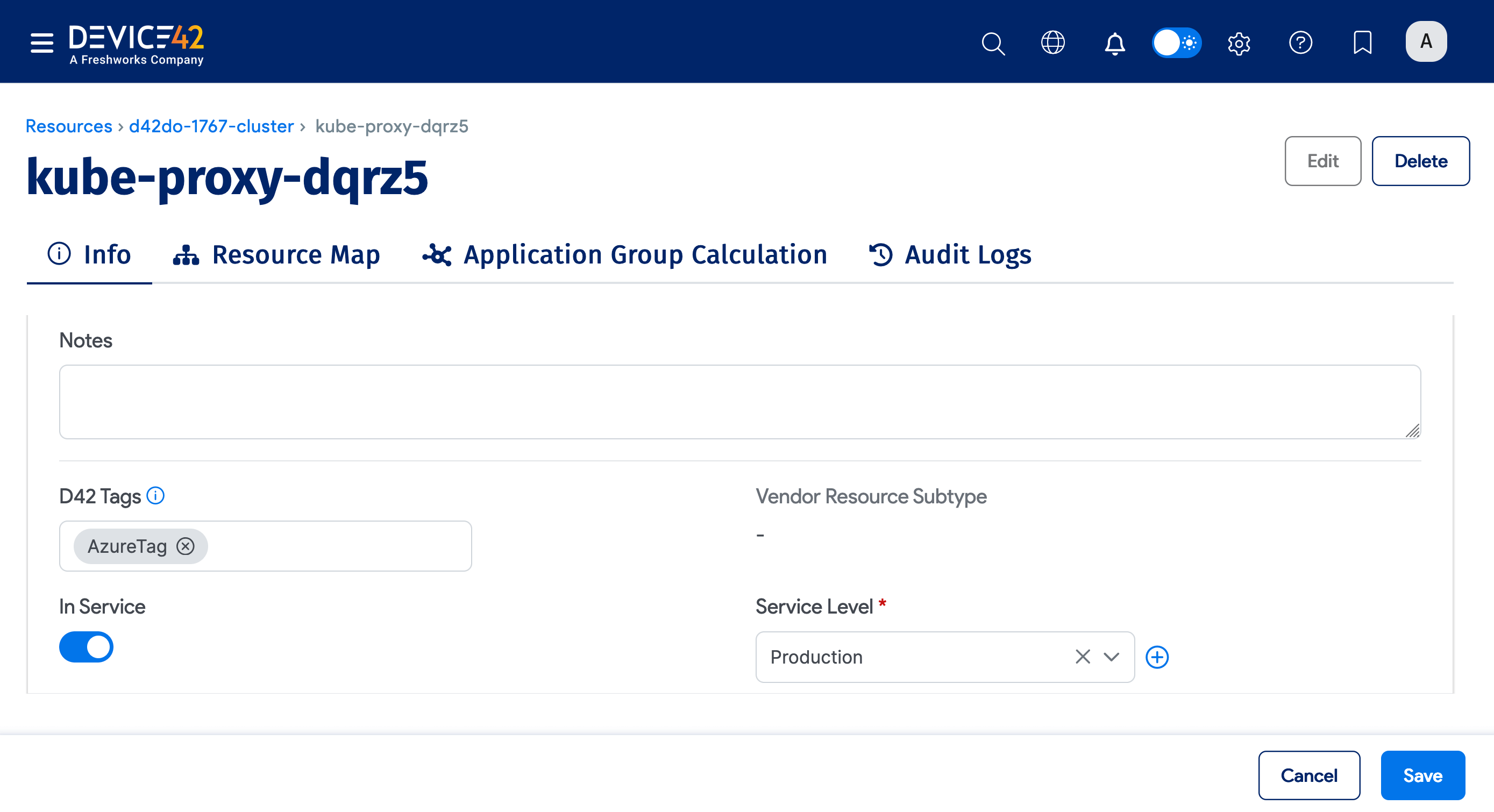Kubernetes Autodiscovery
Kubernetes Discovery Items
The following table outlines the components of a Kubernetes environment, the types of information discovered for each component, and where they can be found in Device42.
| Cloud Service/Object Name | Where to locate in Device42 | Information Generated |
|---|---|---|
| Nodes | Resources > Containers > Kubernetes | Type, version, OS |
| Containers | Resources > Containers > Kubernetes | Region, status, capacity, creation information, etc. |
| Whole Cluster Structure | Resources > Containers > Kubernetes | All general info, namespaces, endpoint details, custom fields |
Kubernetes Discovery for AWS, GCP, and Azure
Kubernetes Discovery is available as an option for Amazon Web Services (AWS), Google Cloud Platform (GCP), and Microsoft Azure (Azure) cloud autodiscovery jobs.
Navigate to Discovery > Cloud and click Create to configure a new discovery job.
Scroll down the Add Cloud Discovery form and check the Kubernetes Discovery option.
Select an option under Action for Kubernetes Resources not found: to choose which action Device42 should take when Kubernetes cluster children resources aren't found during the discovery.
Your cloud discovery job will now also include the discovery of Kubernetes resources on the target cloud platform.
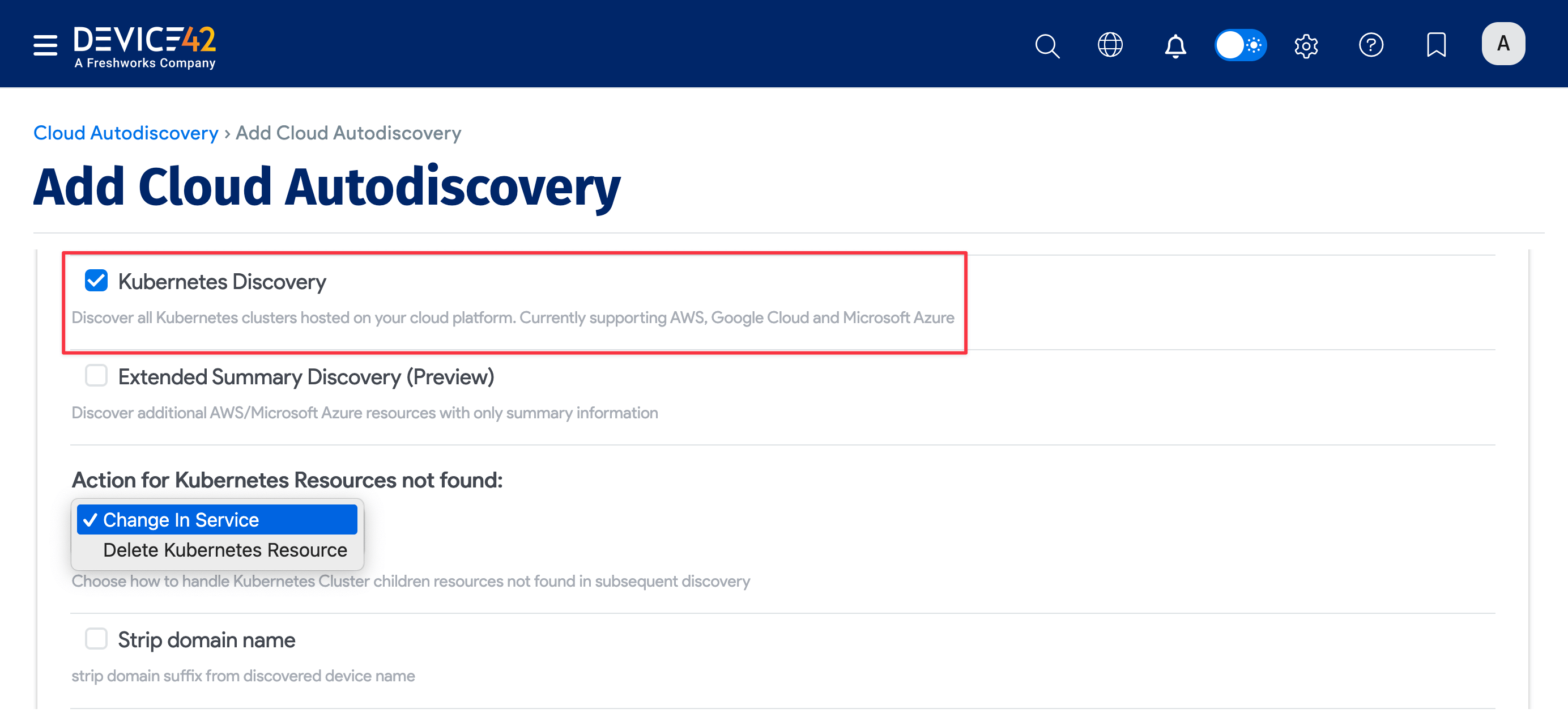
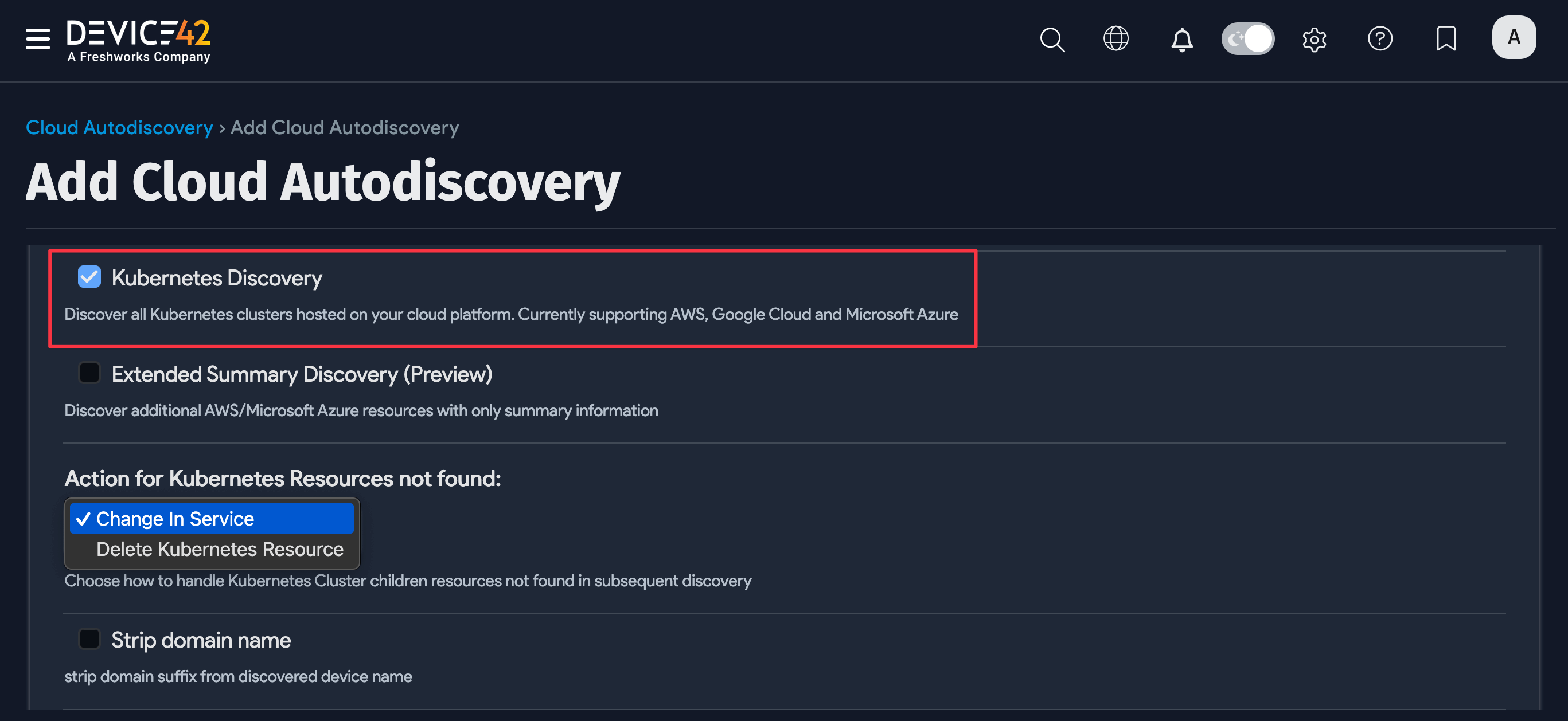
Standalone Kubernetes Discovery
Select Standalone Kubernetes for the cloud autodiscovery Type, and fill in the fields that become available:
- Enter a URL.
- For Authentication type, choose between Bearer Token and Basic Credentials.
- Select an option under Action for Kubernetes Resources not found.

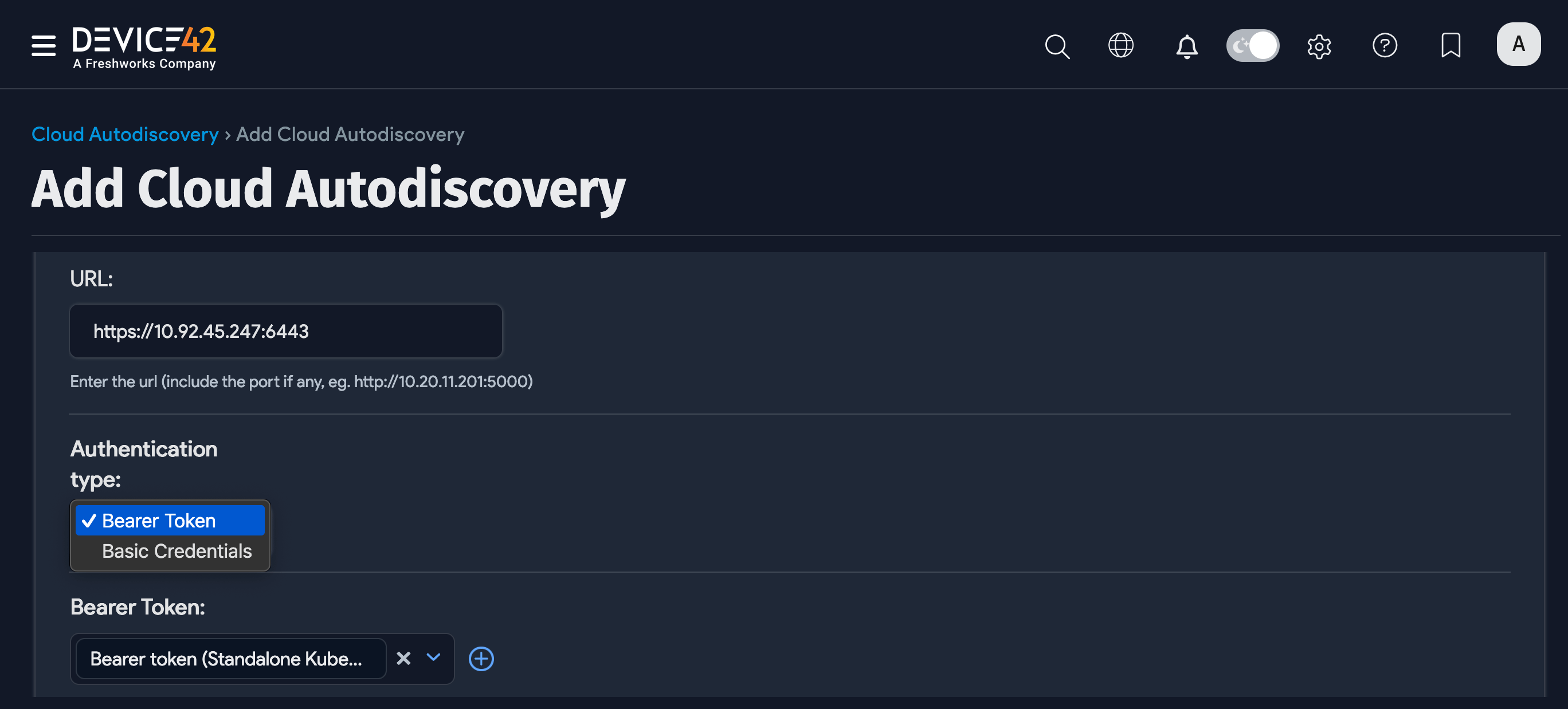
Optionally, you can choose a Vendor and a VRF Group. Please note that all vendors and VRF groups are user-defined.
You also have the option to set the Service Level for all discovered objects, such as "Development", "Deployment", or "Production". See Service Level and Object Category Options in the Cloud Platform Autodiscovery documentation for more information.
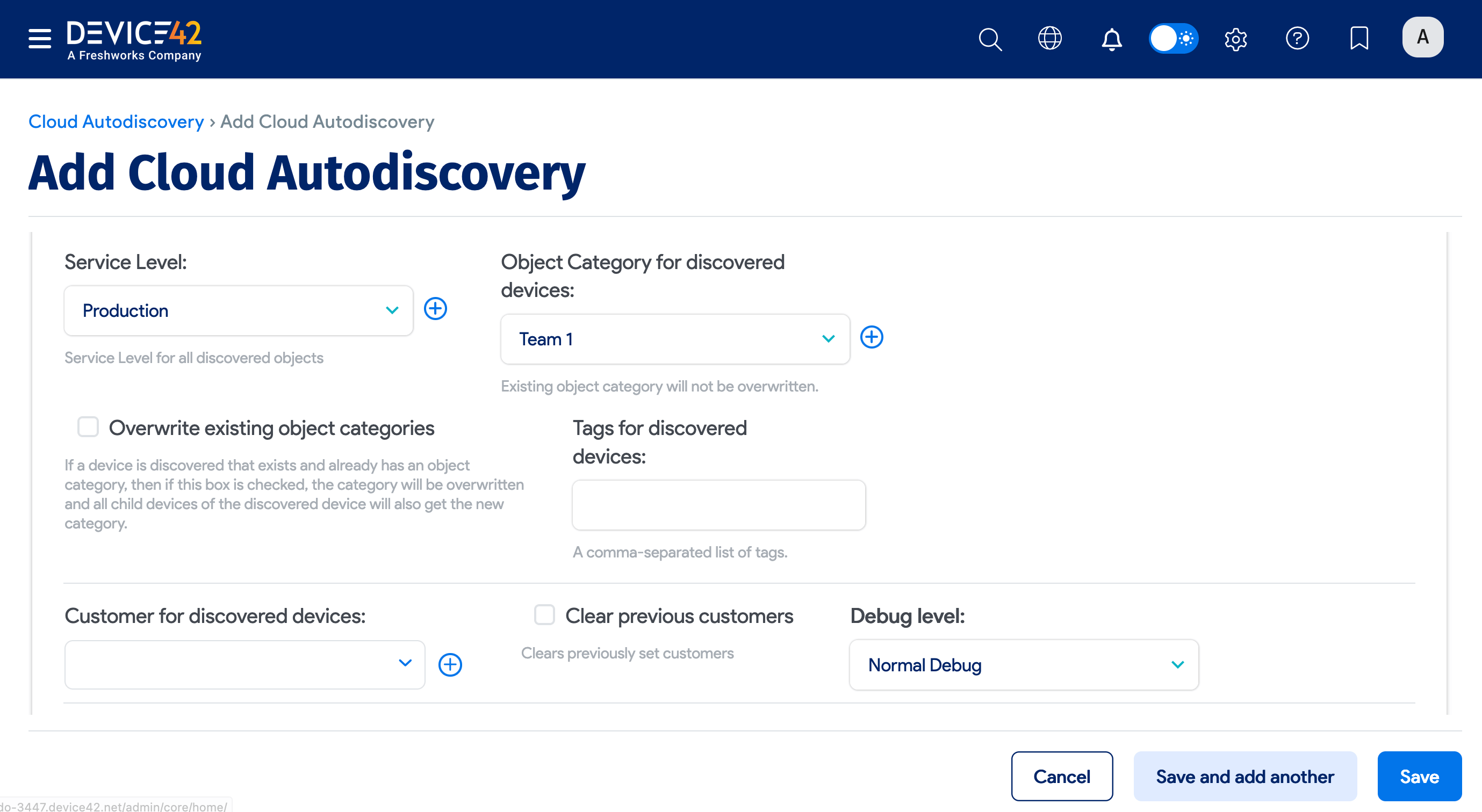
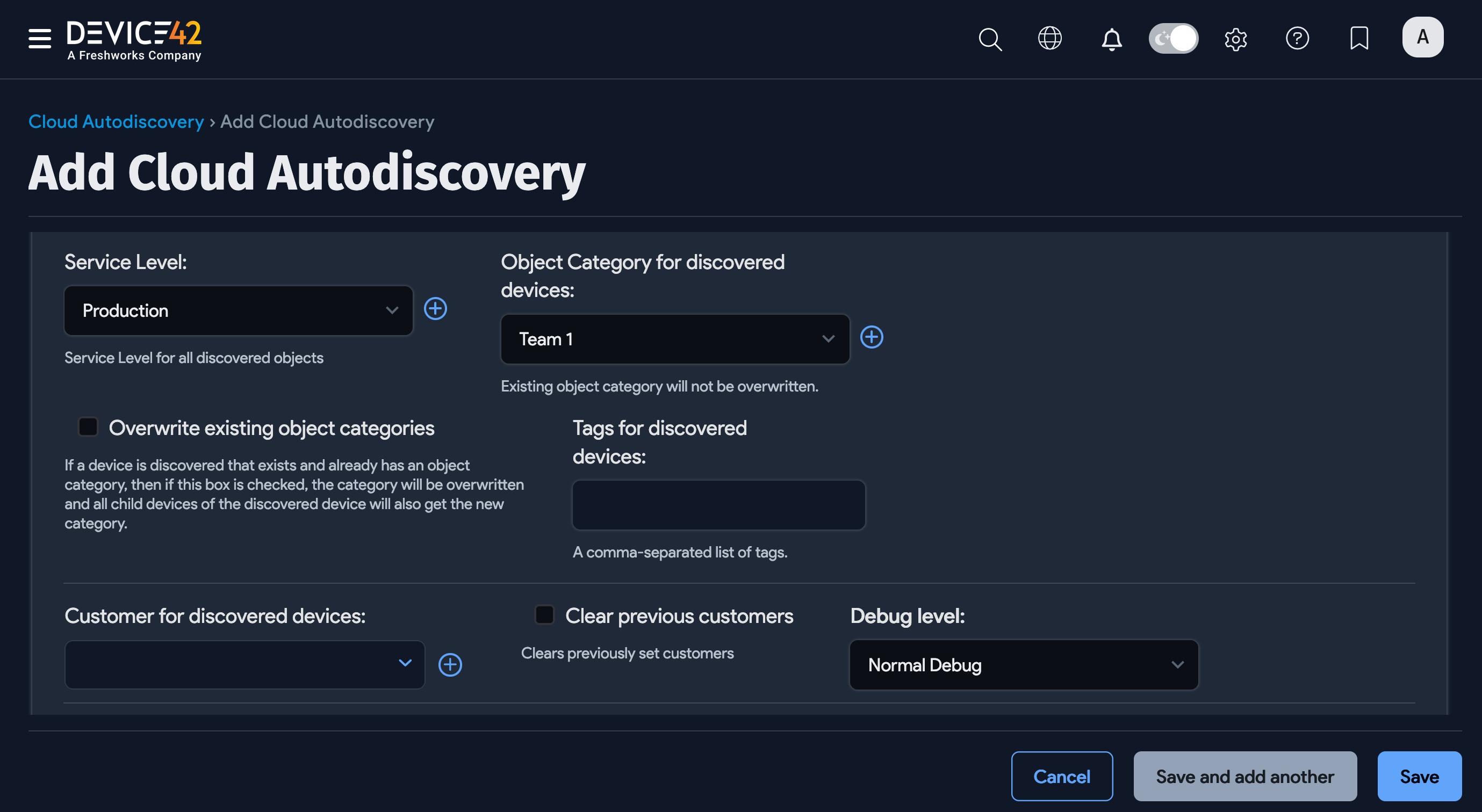
View Discovered Kubernetes Resources
Discovered Kubernetes resources appear on the Resources list page. Navigate to Resources > All Resources from the main menu to display the list page. Use the Vendor Resource Type dropdown to choose which Kubernetes resources to include in the table.
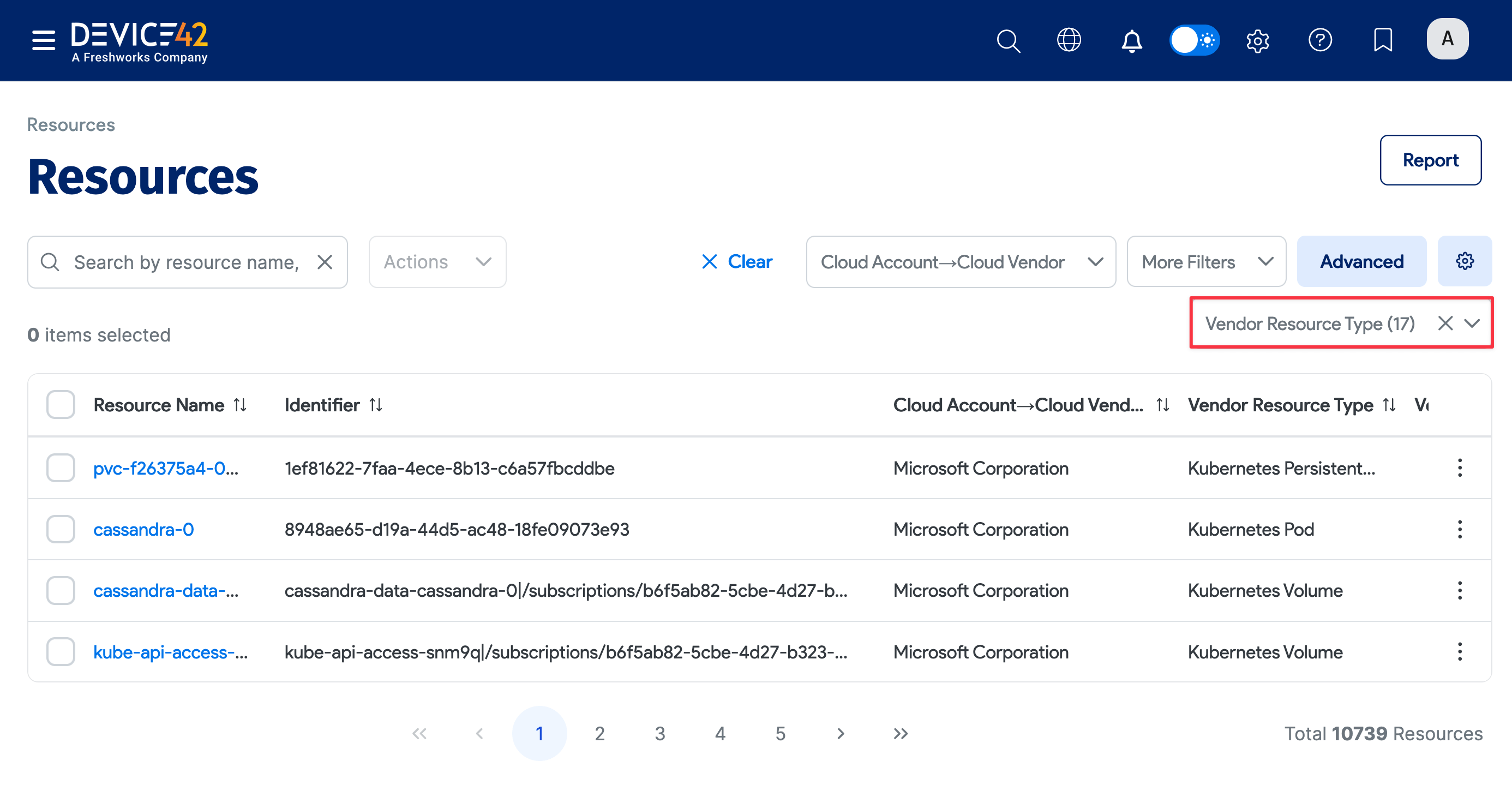
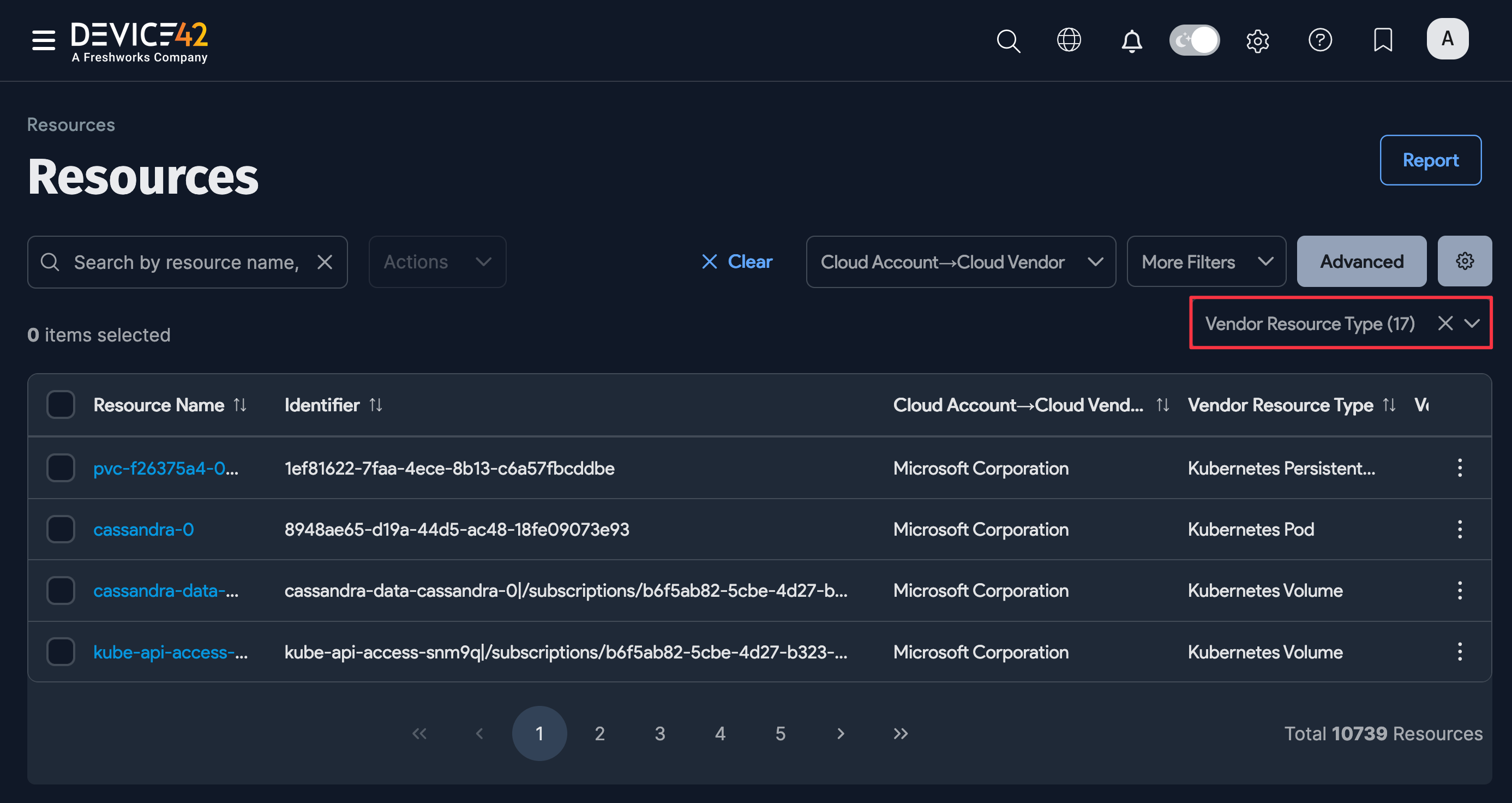
-
Click a Resource Name to view its properties.

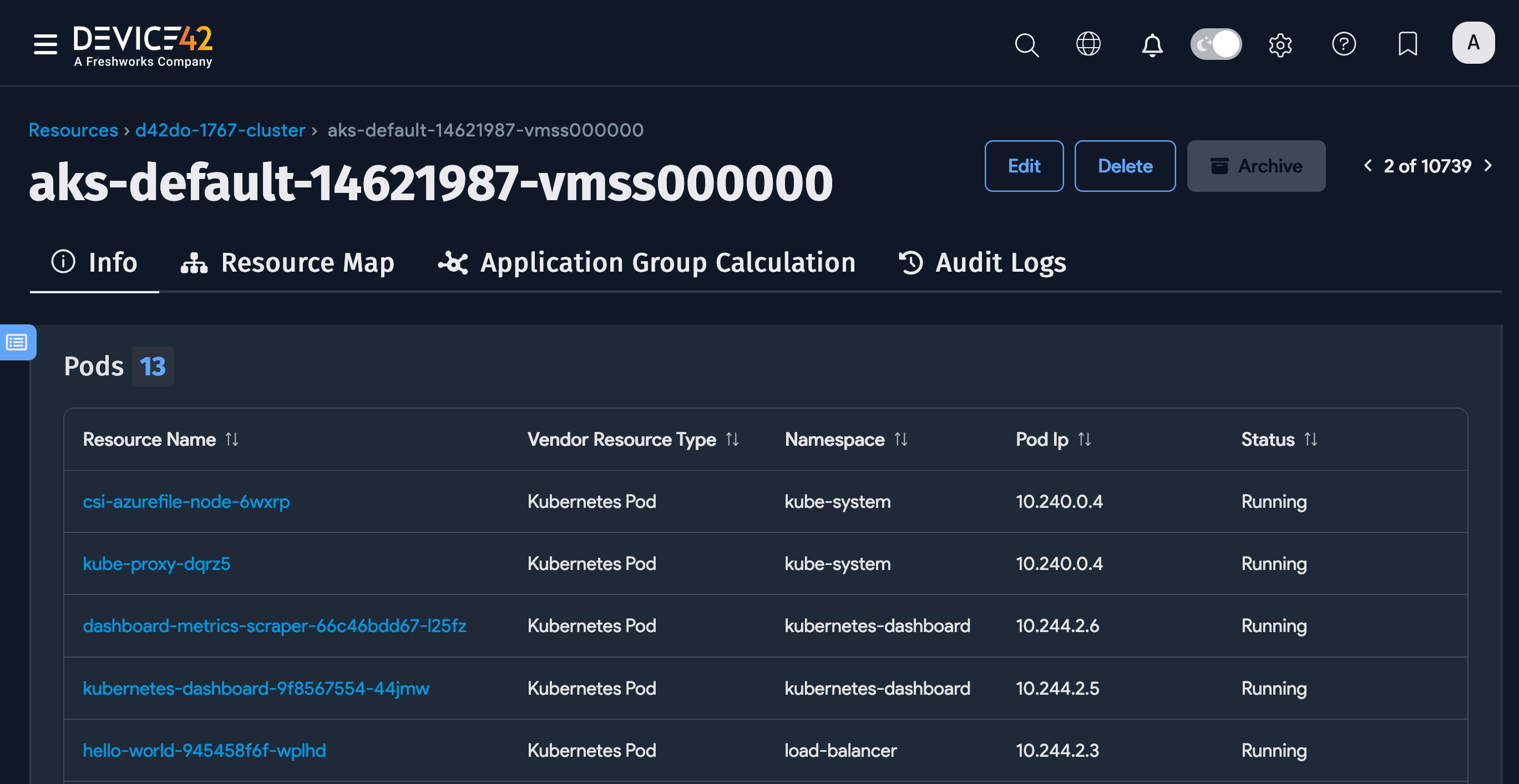
-
Click on the available links to see details about each resource.
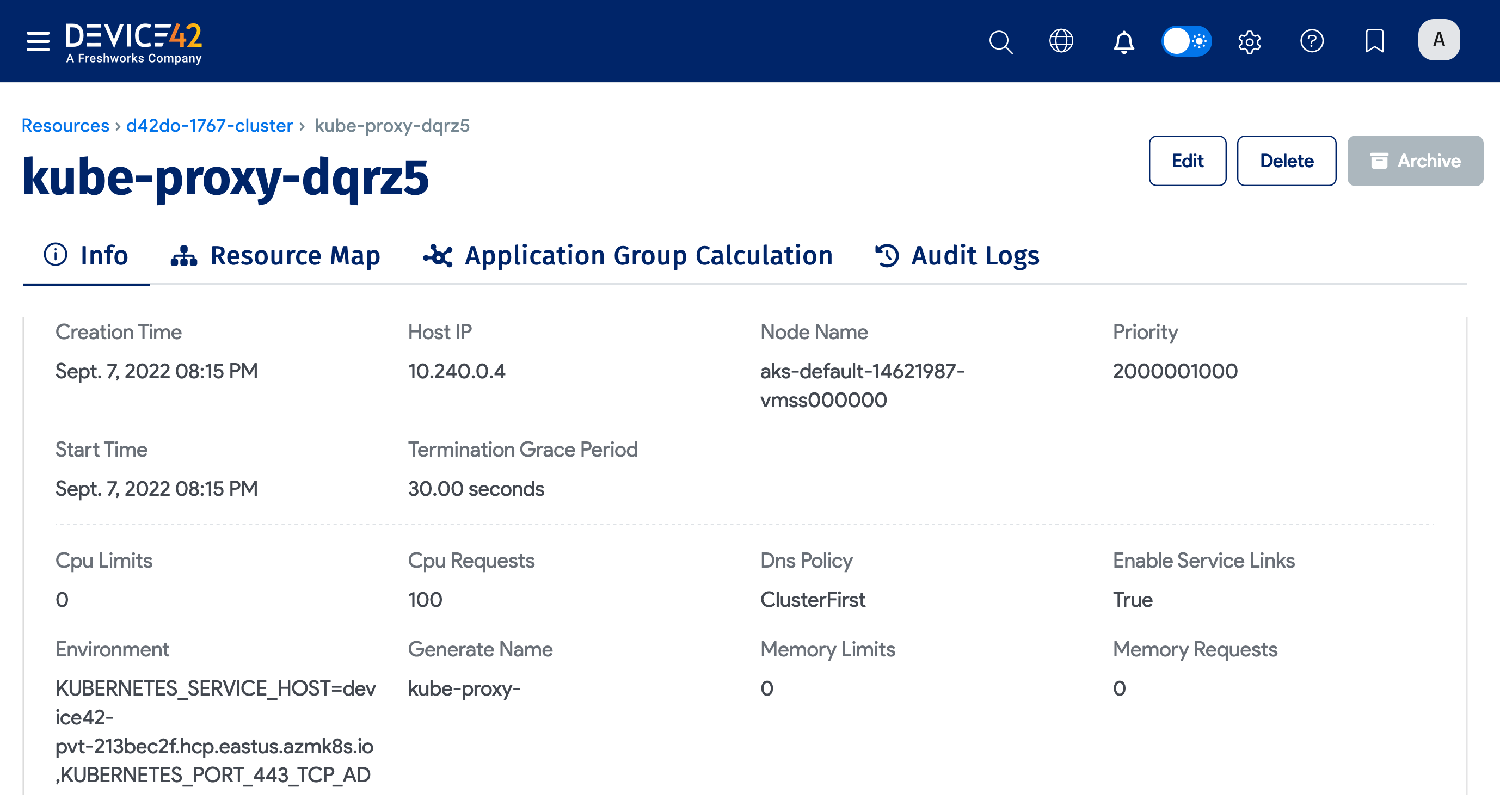
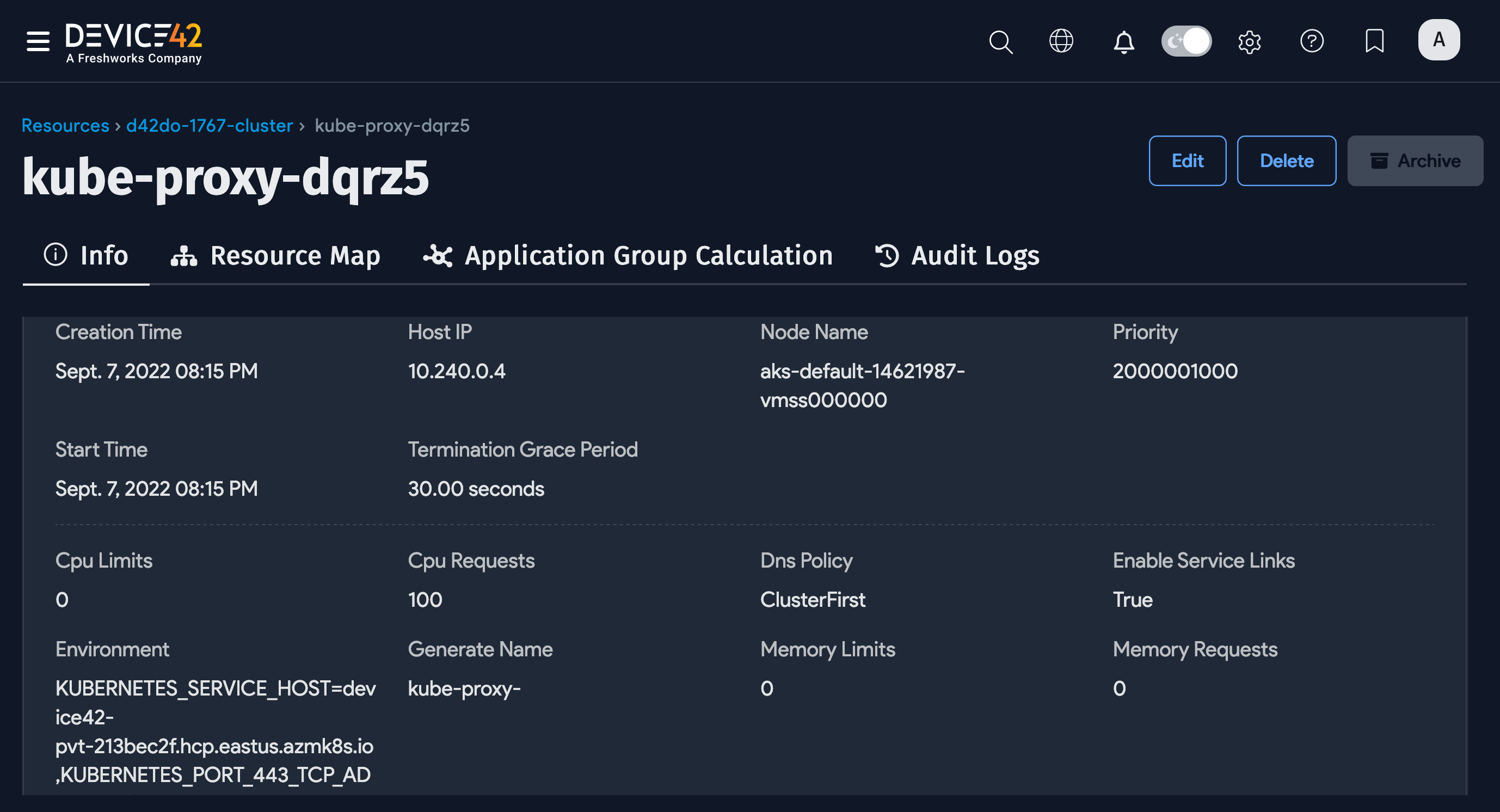
Edit Discovered Kubernetes Resources
Click the Edit button on the bottom right to edit resource information. Editing is generally limited to adding or editing Notes, Tags, the In Service status or level, and Custom Fields values.
